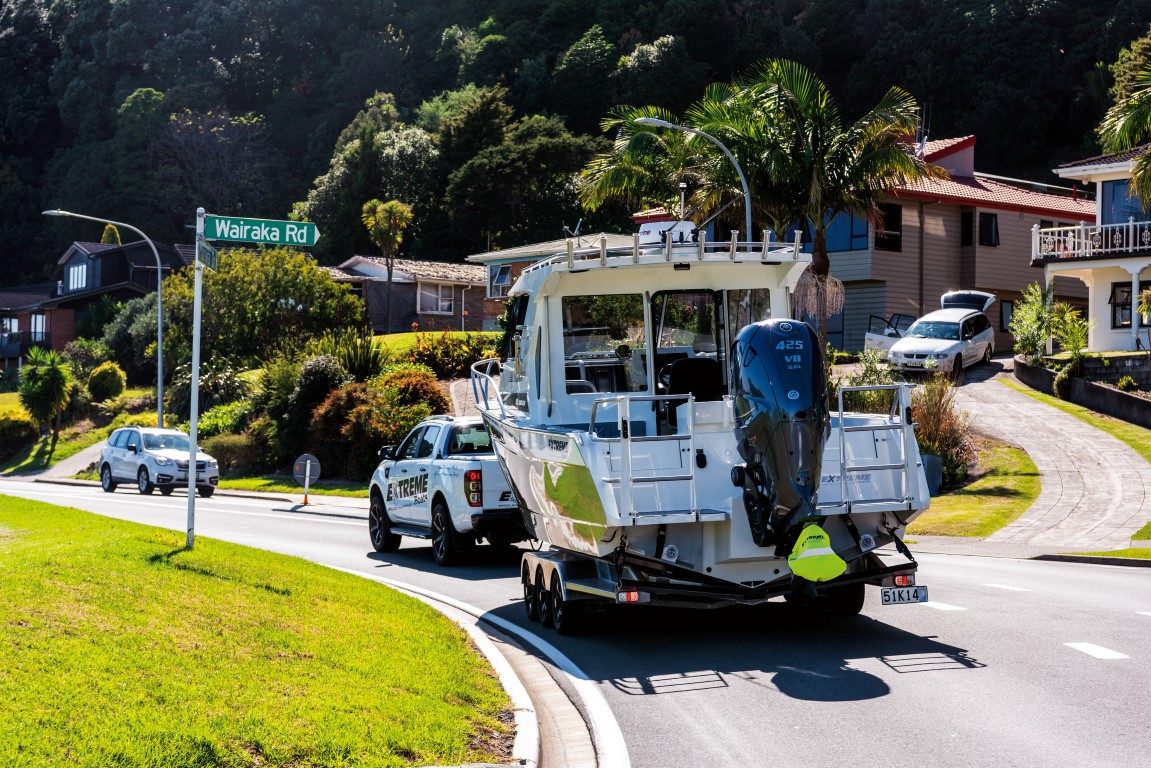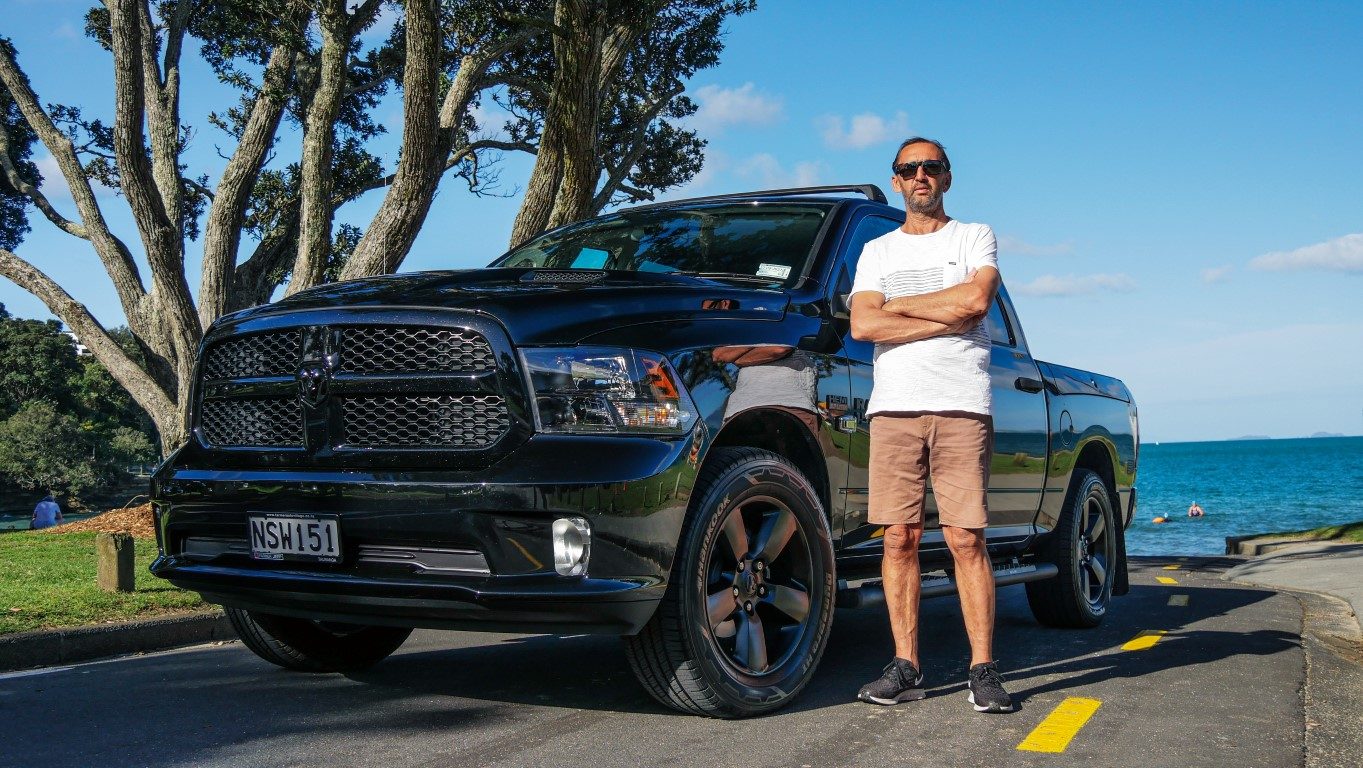

New Zealand’s towing regulations are often slated by the recreational boating sector as being outdated, confusing and contradictory. Our legislation drags behind the rest of world and, with the trend to ever-bigger trailer boats, more potholes lurk ahead. We need to fix it. Story By Lawrence Schaffler.
Boat owners can be forgiven for being confused – our existing regulations contain quite a few misalignments. You’d be hard-pressed, for example, to find a vehicle manufacturer that specifies an unbraked towing load greater than 750kg. And yet, as things stand you are permitted to tow an unbraked trailer weighing up to 2,000kg. With what vehicle?
Riding on an unbraked trailer, even a modestly-sized tinny – loaded with fishing gear, full fuel tanks, water toys, dive tanks, chilly bins and other accessories – will struggle to meet that 750kg tow rating. And it doesn’t take much to push a bigger boat riding on an unbraked trailer over the 2,000kg limit.

A visit to any boat ramp proves that many boaties ignore these regulations. Are they all uncaring law-breakers?
Things become even murkier when GCM (Gross Combined Mass) enters the equation. GCM refers to the combined mass of the tow vehicle and the boat/trailer – and by definition this relates to bigger boats with beefier towing vehicles.
The regulations specify that if the GCM exceeds 6,000kg the vehicle driver needs a Class 2 (HT) license. It’s impossible to know, but only a brave man would bet that all owners of such rigs have the required license. Again, it doesn’t take much to tip a rig over the 6,000kg GCM limit, particularly when you’ve loaded four hefty fishing mates and their kit into the tow vehicle.
Bigger Boats
How do we fix this?
Many would argue the logical first step is to follow Australia’s lead – making braking mandatory on trailers over 750kg. That, and a healthy dose of clarity around the regulations which, most would agree, will probably require significant reform.
The inherent problem, says Danny Sunkel, owner of Tauranga’s GFAB Trailers, is that our towing regulations haven’t kept pace with the ever-evolving boating sector. “The regulations were drafted decades ago when boats were much simpler, smaller and lighter. The average trailer boat size in New Zealand has increased considerably – especially over the last decade.”

For a responsible boat owner trying to do the right thing, interpreting the towing regulations in today’s rapidly-changing boating seascape is difficult, as is reflected in the case of Albany’s Darrell Hawkings – no doubt one of many in a similar situation.
Hawkings owned a hardtop Buccaneer 735 for many years and towed it with a Ford Ranger. The Ford has a 3,500kg towing capacity and the Buccaneer weighs around 2,500kg (dry). “But I stupidly went to a Rayglass Open Day and fell in love with a 2800. When the salesman confirmed its dry weight (3,500kg) I knew I had a problem. Filled with fuel, water, supplies and fishing gear the 2800 would be around 4,000kg. The Ranger wouldn’t cope.”
His research led to a gruntier upgrade – a RAM 1500 Crew Cab Express. With its 5.7-litre V8 there’s no shortage of power and it has a 4,500kg towing capacity. Other compelling factors included the RAM’s heavy-duty towbar/ball (standard), its built-in electronic braking system (integrates seamlessly with the trailer’s twin-axle electronic braking), and its discs-all-round braking – he wants to be able to stop when he needs to.

“But even then, investing in a heftier vehicle to tow the 2800 safely hasn’t been a clear-cut solution. To comply with the RAM’s rated towing capacity my sums showed I could only afford about 300kg of additional gear for a day’s fishing. Furthermore, piling four mates into the RAM takes the GCM to 7,230kgs (the RAM tips the scales at just over 2,500kg) – well over the 6,000kg GCM limit. That means upgrading to a Class 2 driving license – I have to get one to make sure I’m covered by insurance.”
He’s also resigned himself to modifying his fishing excursions – electing to fill up with fuel and water only once the boat is launched to minimise its towing weight.
In effect, the regulations give owners of larger trailer boats – and there are lots of them – very little wriggle room.
Compounding factors
GFAB’s Sunkel says many other factors underscore the need for clarity and reform in our towing regulations.
“That boat size has increased is one issue, but what about the way the boats are presented and fitted-out today? Historically, the average Kiwi boat was a lightweight, open runabout. Today it tends to be a hardtop with a serious superstructure, wraparound glass windows, perhaps even a toilet and/or cooker – and plenty of electronic gear. Even though it’s not physically longer than its predecessors, it’s a lot heavier.”
A new boat purchase, he suggests, is a process that should include an honest discussion between the buyer, boat agent, tow vehicle agent and the trailer manufacturer – to ensure that everyone understands what’s required in terms of a safe and compliant towing set-up. To illustrate his point, he points to the significant weight differences between variants of the same boat model – further compounded by how they are powered.
“Consider the 795 Extreme. There are two cabin configurations, each available with a single or twin outboard option, and there’s now an inboard diesel version as well. All told, there are six variants in one model, but each has a different impact on weight distribution on a trailer, and on the drawbar/tow hitch. If the trailer isn’t set up and balanced correctly, it affects the way it will tow and brake. Our towing regulations don’t accommodate these subtleties – but they should.”

He also argues that the need for a robust regulatory framework is underscored by the increased distances boats are being towed. “It’s changed significantly. Game fishing, for example, is now an all-year sport. Anglers are not only towing their boats more often but also further, right across the country, as they follow the fish. We have customers who rack up 30,000km a year.”
Though most boaties try to operate their rigs in a safe and responsible manner, transgressing our existing towing regulations seems to be a fact of life for many. But lurking at the back of everyone’s mind is the awkward question: “If I have a mishap, will my ‘iffy’ towing status compromise my cover and a claim?”
Insurance
Boat insurance is typically broad spectrum, ranging across multiple scenarios – everything from superficial damage and petty theft to fire and total write-off. But if we accept that many boat/trailer rigs fall outside the weight/braking parameters specified in the regulations, does that automatically disqualify any claim?
Aaron Mortimer – owner of Mariner Marine Insurance – takes a pragmatic view. “I can say – in all my years in the industry – that an overweight boat/trailer has very rarely been
a factor with a claim. In my experience most owners – particularly of larger vessels – have been boating for many years. They know towing.
“They’re responsible about it and are very careful about running a safe, reliable set-up. The owner of a $400,000 vessel on a triple-axle trailer isn’t the chap scratching his head wondering if his ute is up to the task. He understands the need for a dedicated tow vehicle and a properly-braked trailer.”
Every claim, he adds, is assessed on its merits, and if the nature of damage or loss is not impacted by a weight/towing issue, he tends to ignore it. The loss of a boat caused by a hopelessly underpowered tow vehicle trying to negotiate a steep hill, of course, falls into a different category.
He stresses that boat insurers are not legal experts – he has never given (and never will) a client advice/guidance about an appropriate towing set-up. “People need to do their own research. If we get queries of this nature we always refer the client to the New Zealand Transport Agency (NZTA) for clarification about towing parameters, braking and licensing.”
Mortimer would, however, welcome greater clarity around towing regulations and, like many others believes our current regulations have outlived their use-by date. “Boats and vehicles have changed so much over the last decade – particularly the big trailer boats – the legislation is no longer fit-for-purpose. I think an in-depth, formal consultation between vehicle-, trailer- and boat-manufacturers would be a very good idea.”
For many boat owners trying to negotiate, interpret and abide with the towing regulations, it’s all become too hard – an easier solution is keeping the boat in a dry stack, even though that considerably limits one’s boating range.
The industry – all facets of it – needs to have that towing conversation.
Trailer problems
While it’s easy to become frustrated when working through our towing regulatory framework, how often is an underpowered tow vehicle or overweight boat/trailer actually a problem? Based on US research,
it seems very rarely.
American insurance company BoatUS handles thousands of calls every year for towing breakdowns. An analysis of five years of data (2013-2017) highlighted the most common issues.
• Tyres (44%) – typically caused by underinflated trailer tyres.
• Wheel Bearings (21%) – cold water ingress into hot (poorly-protected) bearings promotes early failure.
• Axles (11%) – usually caused by rust, exacerbated by not washing down a trailer after saltwater launchings/retrievals.
• Miscellaneous (6%) – failure of items such as brakes/brake lines, suspension and towbar/towball.
• Tow Vehicle (5%) – mainly overheating engines.
NZTA RECOMMENDATIONS
How much can your vehicle tow?
Most vehicle manufacturers, says NZTA’s website, have tow ratings specifying the gross trailer weight (braked, unbraked, or both) the vehicle can safely tow. Although the law does not require these tow ratings to be followed, NZTA recommends that they be taken into account.
In addition, the law requires that every light vehicle and trailer combination must be capable of stopping within a distance of 7m from a speed of 30km/h. In effect, this means the maximum allowable weight of an unbraked trailer is limited by the weight and braking ability of the vehicle being used to tow it.
As a guide, NZTA recommends that the laden weight of an unbraked trailer should not exceed three quarters of the unladen weight of the towing vehicle – and then only if the towing vehicle’s brakes and tyres are in excellent condition.




